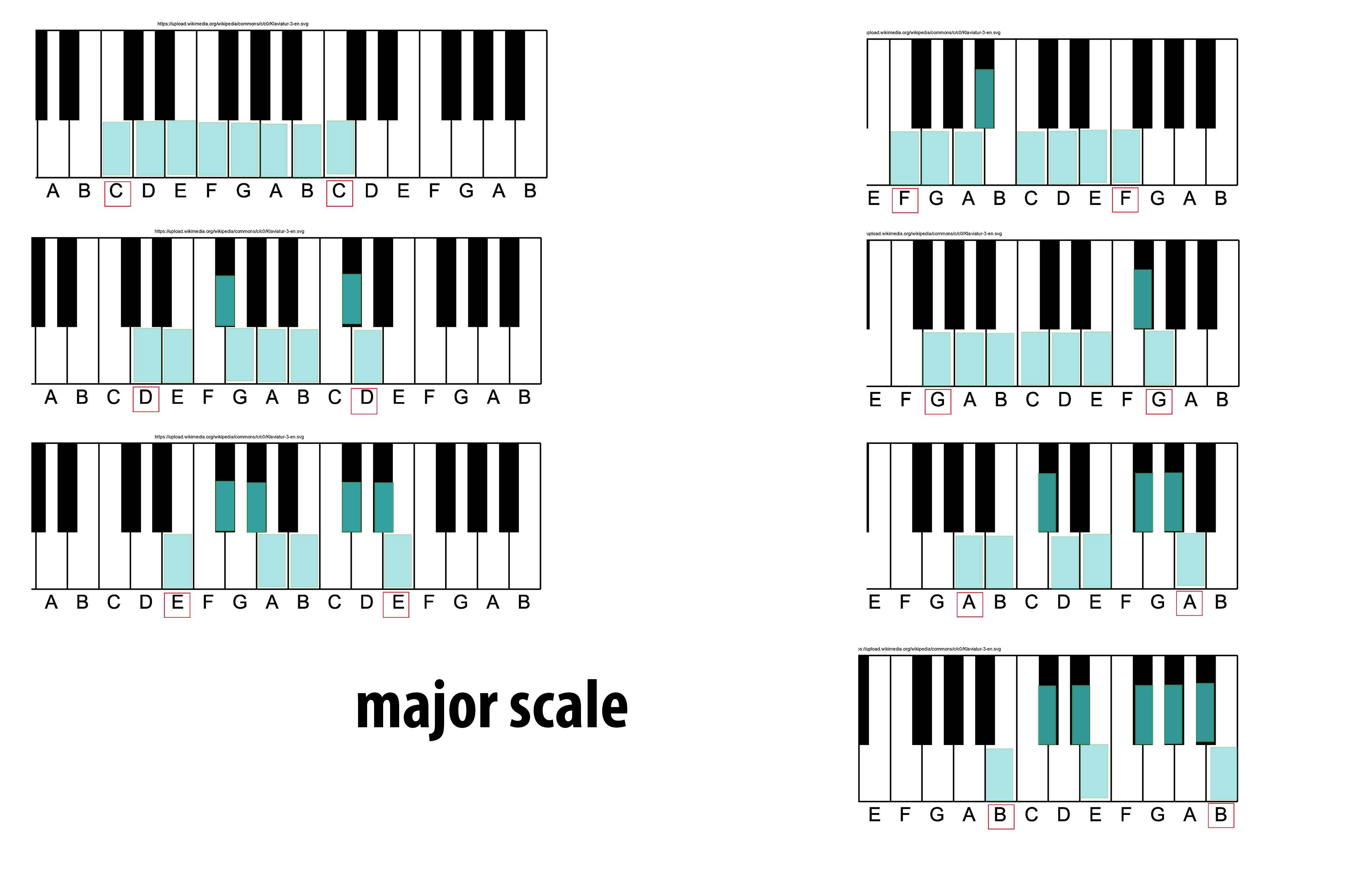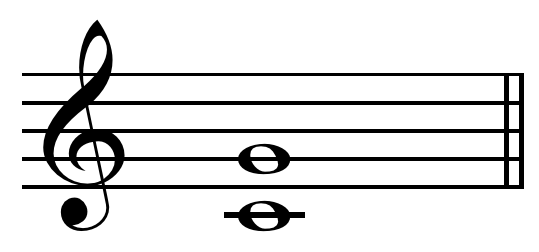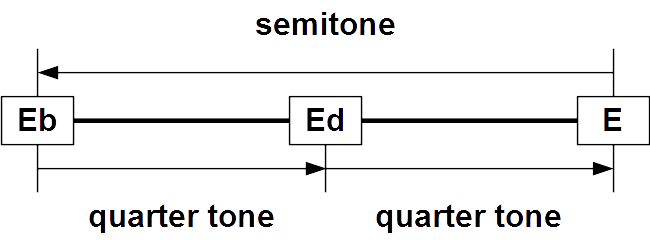|
Rast (Arabic Maqam)
Rast is the implementation of the Rast (maqam), Rast maqam in Arabic maqam theory. Its formal account is in 24 Tone Equal Temperament, but according to some musicologists, there are slight variations in practice. Rast is similar to a major scale, with the exceptions of half-flat third and sixth degrees in the ascent. Maqam Rast ascending in 24-TET The Rast ascending scale consists of the combination of two Rast tetrachords: * 1: Tonic (music), Tonic note * 2: Major second * 3: Neutral third * 4: Perfect fourth, Perfect Fourth * 5: Perfect Fifth * 6: Major sixth, Major Sixth * 7: Neutral interval, Neutral Seventh (In Rast descending, it is Minor seventh, Minor Seventh instead) * 8: Octave Structure The pitches of maqam Rast are C, D, E neutral third, half-flat, F, G, A, B half-flat. The descent typically uses B flat. Maqam Rast is composed of jins rast on C (C, D, E half-flat, F, G) and jins rast on G (G, A, B half-flat, C) References {{reflist External links Rast page ... [...More Info...] [...Related Items...] OR: [Wikipedia] [Google] [Baidu] |
Rast (maqam)
Rast Panjgah (or Rast; ) is the name of a ''dastgah'' (musical mode) in Iranian music and of a ''Arabic maqam, maqam'' in Arabic music, Arabic and related systems of music. ''Rast'' () is a Persian word meaning "right" or "direct". Rast is regarded as the basic ''dastgah'' in Iranian music and later on was adopted in Arabic music, Arabic and Turkish makam music, in the same way as the major scale in Western music, though it is rather different from the major scale in detail. ''Rast'' features a quarter tone, half-flat third and a half-flat seventh scale degrees. Middle eastern Sephardic Jews liken the word ''rast'' to "head" from the Hebrew word ''rosh''. Therefore, they have a tradition of applying maqam rast to the prayers whenever they begin a new Torah book in the weekly Torah portions (this occurs approximately five times a year as there are five books in the Torah). Rast in different music traditions * Rast (Arabic maqam) * Rast (Turkish makam) *Rast pitch class set * Ras ... [...More Info...] [...Related Items...] OR: [Wikipedia] [Google] [Baidu] |
Major Scale
The major scale (or Ionian mode) is one of the most commonly used musical scales, especially in Western music. It is one of the diatonic scales. Like many musical scales, it is made up of seven notes: the eighth duplicates the first at double its frequency so that it is called a higher octave of the same note (from Latin "octavus", the eighth). The simplest major scale to write is C major, the only major scale not requiring sharps or flats: The major scale has a central importance in Western music, particularly that of the common practice period and in popular music. In Carnatic music, it is known as '' Sankarabharanam''. In Hindustani classical music, it is known as '' Bilaval''. Structure A major scale is a diatonic scale. The sequence of intervals between the notes of a major scale is: : whole, whole, half, whole, whole, whole, half where "whole" stands for a whole tone (a red u-shaped curve in the figure), and "half" stands for a semitone (a red angled ... [...More Info...] [...Related Items...] OR: [Wikipedia] [Google] [Baidu] |
Tonic (music)
In music, the tonic is the first scale degree () of the diatonic scale (the first note of a scale) and the tonal center or final resolution tone that is commonly used in the final cadence in tonal (musical key-based) classical music, popular music, and traditional music. In the movable do solfège system, the tonic note is sung as ''do''. More generally, the tonic is the note upon which all other notes of a piece are hierarchically referenced. Scales are named after their tonics: for instance, the tonic of the C major scale is the note C. The triad formed on the tonic note, the tonic chord, is thus the most significant chord in these styles of music. In Roman numeral analysis, the tonic chord is typically symbolized by the Roman numeral "" if it is major and by "" if it is minor. These chords may also appear as seventh chords: in major, as M7, or in minor as 7 or rarely M7: The tonic is distinguished from the root, which is the reference note of a chord, rathe ... [...More Info...] [...Related Items...] OR: [Wikipedia] [Google] [Baidu] |
Major Second
In Western music theory, a major second (sometimes also called whole tone or a whole step) is a second spanning two semitones (). A second is a musical interval encompassing two adjacent staff positions (see Interval number for more details). For example, the interval from C to D is a major second, as the note D lies two semitones above C, and the two notes are notated on adjacent staff positions. Diminished, minor and augmented seconds are notated on adjacent staff positions as well, but consist of a different number of semitones (zero, one, and three). The major second is the interval that occurs between the first and second degrees of a major scale, the tonic and the supertonic. On a musical keyboard, a major second is the interval between two keys separated by one key, counting white and black keys alike. On a guitar string, it is the interval separated by two frets. In moveable-do solfège, it is the interval between ''do'' and ''re''. It is considered a ... [...More Info...] [...Related Items...] OR: [Wikipedia] [Google] [Baidu] |
Neutral Third
A neutral third is a musical interval wider than a minor third but narrower than a major third , named by Jan Pieter Land in 1880. Land makes reference to the neutral third attributed to Zalzal (8th c.), described by Al-Farabi (10th c.) as corresponding to a ratio of 27:22 (354.5 cents) and by Avicenna (Ibn Sina, 11th c.) as 39:32 (342.5 cents). The Zalzalian third may have been a mobile interval. Three distinct intervals may be termed neutral thirds: * The ''undecimal neutral third'' has a ratio of 11:9 between the frequencies of the two tones, or about 347.41 cents . This ratio is the mathematical mediant of the major third 5/4 and the minor third 6/5, and as such, has the property that if harmonic notes of frequency ''f'' and (11/9) ''f'' are played together, the beat frequency of the 5th harmonic of the lower pitch against the 4th of the upper, i.e. , 5 f - 4 (11/9) f, = (1/9) f, is the same as the beat frequency of the 6th harmonic of the lower pitch against the 5th ... [...More Info...] [...Related Items...] OR: [Wikipedia] [Google] [Baidu] |
Perfect Fourth
A fourth is a interval (music), musical interval encompassing four staff positions in the music notation of Western culture, and a perfect fourth () is the fourth spanning five semitones (half steps, or half tones). For example, the ascending interval from C to the next F is a perfect fourth, because the note F is the fifth semitone above C, and there are four staff positions between C and F. Diminished fourth, Diminished and Tritone, augmented fourths span the same number of staff positions, but consist of a different number of semitones (four and six, respectively). The perfect fourth may be derived from the Harmonic series (music), harmonic series as the interval between the third and fourth harmonics. The term ''perfect'' identifies this interval as belonging to the group of perfect intervals, so called because they are neither major nor minor. A perfect fourth in just intonation corresponds to a pitch ratio of 4:3, or about 498 cent (music), cents (), while in equal temperam ... [...More Info...] [...Related Items...] OR: [Wikipedia] [Google] [Baidu] |
Perfect Fifth
In music theory, a perfect fifth is the Interval (music), musical interval corresponding to a pair of pitch (music), pitches with a frequency ratio of 3:2, or very nearly so. In classical music from Western culture, a fifth is the interval from the first to the last of the first five consecutive Musical note, notes in a diatonic scale. The perfect fifth (often abbreviated P5) spans seven semitones, while the Tritone, diminished fifth spans six and the augmented fifth spans eight semitones. For example, the interval from C to G is a perfect fifth, as the note G lies seven semitones above C. The perfect fifth may be derived from the Harmonic series (music), harmonic series as the interval between the second and third harmonics. In a diatonic scale, the dominant (music), dominant note is a perfect fifth above the tonic (music), tonic note. The perfect fifth is more consonance and dissonance, consonant, or stable, than any other interval except the unison and the octave. It occu ... [...More Info...] [...Related Items...] OR: [Wikipedia] [Google] [Baidu] |
Major Sixth
In music theory, a sixth is a musical interval encompassing six note letter names or staff positions (see Interval number for more details), and the major sixth is one of two commonly occurring sixths. It is qualified as ''major'' because it is the larger of the two. The major sixth spans nine semitones. Its smaller counterpart, the minor sixth, spans eight semitones. For example, the interval from C up to the nearest A is a major sixth. It is a sixth because it encompasses six note letter names (C, D, E, F, G, A) and six staff positions. It is a major sixth, not a minor sixth, because the note A lies nine semitones above C. Diminished and augmented sixths (such as C to A and C to A) span the same number of note letter names and staff positions, but consist of a different number of semitones (seven and ten, respectively). A commonly cited example of a melody featuring the major sixth as its opening is " My Bonnie Lies Over the Ocean".Blake Neely, ''Piano For Dummies'', se ... [...More Info...] [...Related Items...] OR: [Wikipedia] [Google] [Baidu] |
Neutral Interval
In music theory, a neutral interval is an interval (music), interval that is neither a major and minor, major nor minor, but instead in between. For example, in Equal temperament#Twelve-tone equal temperament, equal temperament, a major third is 400 cent (music), cents, a minor third is 300 cents, and a neutral third is 350 cents. A neutral interval Inversion (interval), inverts to a neutral interval. For example, the inverse of a neutral third is a neutral sixth. Roughly, neutral intervals are a quarter tone sharp from minor intervals and a quarter tone flat from major intervals. In just intonation, as well as in tunings such as 31 equal temperament, 31-ET, 41 equal temperament, 41-ET, or 72 equal temperament, 72-ET, which more closely approximate just intonation, the intervals are closer together. *#Neutral second, Neutral second *Neutral third *Neutral sixth *#Neutral seventh, Neutral seventh Second A neutral second or medium second is an interval wider than a minor seco ... [...More Info...] [...Related Items...] OR: [Wikipedia] [Google] [Baidu] |
Minor Seventh
In music theory, a minor seventh is one of two musical intervals that span seven staff positions. It is ''minor'' because it is the smaller of the two sevenths, spanning ten semitones. The major seventh spans eleven. For example, the interval from A to G is a minor seventh, as the note G lies ten semitones above A, and there are seven staff positions from A to G. Diminished and augmented sevenths span the same number of staff positions, but consist of a different number of semitones (nine and twelve, respectively). Use Minor seventh intervals rarely feature in melodies (and especially in their openings) but occur more often than major sevenths. A well-known example, in part due to its frequent use in theory classes, is found between the first two words of the phrase "There's a place for us" in the song " Somewhere" in '' West Side Story''. Another well-known example occurs between the first two notes of the introduction to the main theme music from '' Star Trek: The Origi ... [...More Info...] [...Related Items...] OR: [Wikipedia] [Google] [Baidu] |
Octave
In music, an octave (: eighth) or perfect octave (sometimes called the diapason) is an interval between two notes, one having twice the frequency of vibration of the other. The octave relationship is a natural phenomenon that has been referred to as the "basic miracle of music", the use of which is "common in most musical systems". The interval between the first and second harmonics of the harmonic series is an octave. In Western music notation, notes separated by an octave (or multiple octaves) have the same name and are of the same pitch class. To emphasize that it is one of the perfect intervals (including unison, perfect fourth, and perfect fifth), the octave is designated P8. Other interval qualities are also possible, though rare. The octave above or below an indicated note is sometimes abbreviated ''8a'' or ''8va'' (), ''8va bassa'' (, sometimes also ''8vb''), or simply ''8'' for the octave in the direction indicated by placing this mark above or below the staff. ... [...More Info...] [...Related Items...] OR: [Wikipedia] [Google] [Baidu] |





